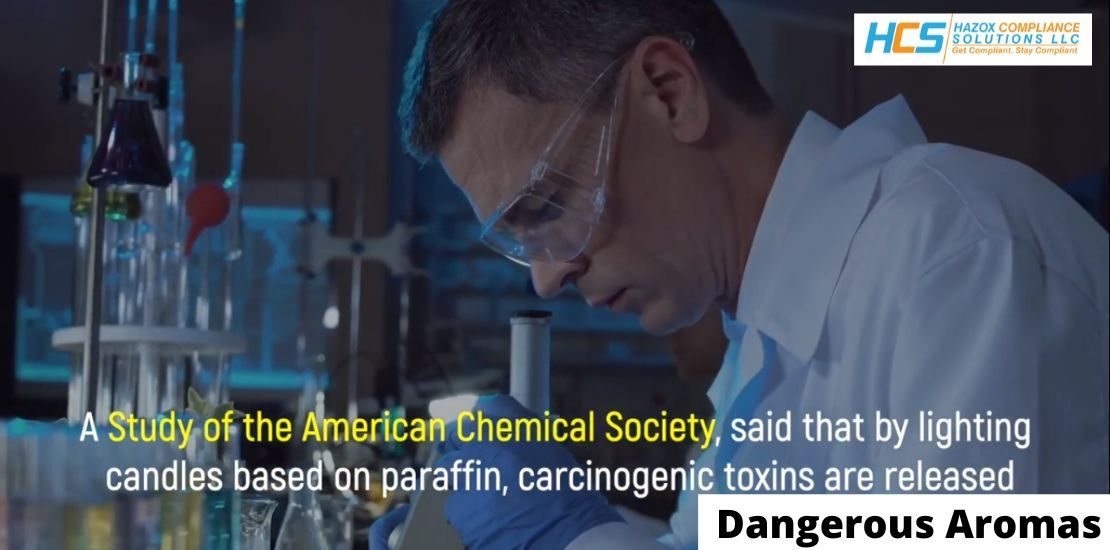- December 28, 2019
- Posted by: admin
- Category: Blogs

During these holidays we usually get together with our family and friends to celebrate Christmas and the New Year. In addition to spending pleasant moments, we want to make a good impression with a welcoming atmosphere and a delicious aroma that makes us feel at home.
Although nothing replaces the smell of fresh flowers or freshly baked cookies, the hectic pace of life we live in has led us to seek faster and more practical solutions to aromatize our home. Scented candles have become a fashionable item, especially in the winter season when we spend a lot of time together inside our homes and want a cozy atmosphere also emits dangerous aromas
However, although the idea of flooding the house with a delicious pine or vanilla aroma just by lighting a candle is very tempting, we should think about it more than once due to the possible safety risks we may be exposed to.
History and Evolution.
Candles were invented between the 13th and 14th centuries BC by the Egyptians, who made them from branches coated with the tallow of oxen or lambs. [1]
But, candles as they are known today began to be made in the Middle Ages, with tallow and beeswax. It was not until 1850, following the discovery of oil, that they began to be made from paraffin. Now most candles are made from this type of wax.
Are they really harmless to your health?
Today, most candles available on the market are made of paraffin, which is a whitish, translucent, flammable waxy solid consisting of a mixture of saturated hydrocarbons obtained by distilling oil, shale or coal. It is widely used in candles, cosmetics, polishes, sealing and waterproofing compounds and numerous other industrial applications.
Numerous studies, including one presented at the fall 2009 national meeting of the American Chemical Society in Washington, D.C., claim that when paraffin-based candles are lit, carcinogenic toxins are released, putting those who make constant use of these products at risk. [2]
Candles made with this substance are suspected of releasing toxic chemicals, such as toluene and benzene. Toluene and benzene are known to be carcinogenic. Toluene specifically induces the breakdown of DNA chains that affect the central nervous system. [2] If the artificial fragrances and dyes used are also considered, then even more harmful chemicals are added to the mix, such as acetone, carbon disulfide, 2-butanone, trichloroethene, carbon tetrachloride, styrene, xylene, cyclopentene, among others.
A 1999 study, [3] evaluated the compounds emitted by paraffin and beeswax candles, the results were surprising, some of the compounds released were formaldehyde, acetaldehyde and acrolein.Formaldehyde and Acetaldehyde levels where higher than those indicated by the EPA as excess cancer risk level.
Another potential hazard to which users may be exposed is heavy metals, used to make the wick firm. Although candle wicks are supposed to be made of cotton or paper, independent studies have found that some of them contain heavy metals such as lead.
Burning candles with lead wicks can result in indoor air concentrations of lead that are above the EPA’s recommended limits. Although lead wicks have been banned since 1974, they can still be found, especially in low-quality scented candles imported from countries with no lead regulations [3].
As a result of the ban and agreements to avoid the use of lead in candle wicks, alternatives such as the use of zinc have emerged, and although this is an essential element for human health, little is known about the long-term effects that could be caused by the inhalation of zinc dust or fumes.
In addition to the harmful chemicals mentioned above, candle burning can be a source of particulate matter. This term includes a class of pollutants consisting of solid and liquid material that may remain suspended in the atmosphere due to its small size. Inhalable particles have an aerodynamic diameter of less than 10µm. The finest particles (less than 2.5µm) can reach the alveoli of the lungs, while larger particles (2.5 to 10µm) are retained in the upper airways.
The presence of carcinogens in the air pollution mixture may partly explain why air pollutants increase the risk of lung and possibly other cancers. [4]
All of these findings should put into perspective the use and abuse of substances that have proven to be a threat to good indoor air quality.
What can I do?
The ideal solution would be not to use this type of candle and to look for natural options with similar fragrances, but, as it is not always possible, then the recommendation is to give a turn to our vision and go back to natural options.
Below are some solutions to achieve a pleasantly fragranced environment while maintaining air quality and minimizing the toxic chemicals we are exposed to.
- Diffuse essential oils. In addition to the health benefits of essential oils, which are beyond the scope of this article, you can take advantage of their incredible aroma. Instead of spreading toxins into the air by lighting scented candles, using an essential oil diffuser will eliminate unpleasant odors and also promote better physical and mental health.
- Make your own aromatic potpourri. This is an excellent option to achieve an excellent aroma in your home, just add to some simmering water the fragrance you want, can be mint leaves, citrus peels, vanilla pods, flower petals. The combinations are endless and the results unbeatable, and best of all, no chemicals!
- Make your own scent spray. This is a special option to keep in the bathroom, for which you can mix about ten drops of essential oil in seven tablespoons of water. Shake well before using the spray.
- Open the windows and let the fresh air in. This option seems to be quite obvious, but for the same reason, it is often forgotten. Doing so will get rid of any lingering odors and, even for 10 to 15 minutes a day, will improve the air quality inside your home.
With all these alternatives, now is the time to get rid of your scented candles, get ready to reduce the load of toxins in your house and thank your body with new healthy habits.
References:
[1] Mohar, E. ¿Quién inventó las velas? Digital Magazine Muy Interesante. May, 2018. [Article in Spanish] Consulted on 12/19/2019 at: https://www.muyinteresante.com.mx/preguntas-y-respuestas/quien-invento-velas/
[2] S. Hensley.Candlelight: A Dash of Toxin with Your Romance?NPR, 20 Aug 09. Consulted on 12/19/2019 at: https://www.npr.org/sections/health-shots/2009/08/candle_toxic_chemicals.html
[3] Knight, L. Levin, A. Mendenhall, C. Candles and Incense as Potential Sources of Indoor Air Pollution: Market Analysis and Literature Review. 2001. U.S. Environmental Protection Agency. Consulted on 12/19/2019 at:https://nepis.epa.gov/Exe/ZyPURL.cgi?Dockey=P1009BZL.txt
[4] Yanagi, Y. De Assunção, V. Vizeu, L. The impact of atmospheric particulate matter on cancer incidence and mortality in the city of São Paulo, Brazil. 2012. Universidade de São Paulo.Consulted on 12/19/2019 at: https://www.scielosp.org/article/csp/2012.v28n9/1737-1748/en/
